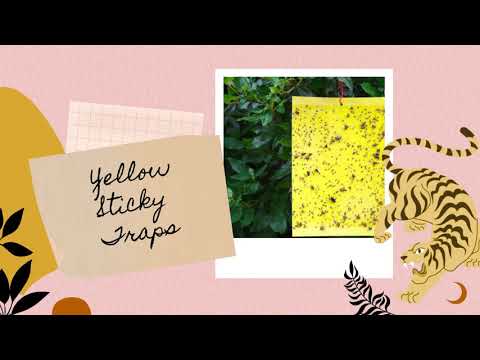Houseplant pests are always something very annoying…
… one of them being the fungus gnats.
They may not necessarily harm humans…
… but they do harm plants to a severe level.
Hear it from Dan!
I despise flying insects, especially if they come in bunches…
They like to just fly up in front of my face…
… and disturb my sight and my sense of touch.
Especially if they happen to park on my skin…
… the feeling is just very unpleasant.
I am thankful though, since they do not put any harm on me…
But this is not the case for my houseplants…
I have had a bunch of my houseplants infested by these creatures…
… but thankfully, none of them had died yet – and I hope none will.
The task for me now is to make sure my plants stay alive…
… by looking up on how to get rid of this pest!
Annoyed like Dan?
It’s time for you to discover about getting rid of them now…
They can be an annoying problem, regardless of…
… whether you are dealing with the larvae or adults.
Fungus gnats love humidity and moisture…
Finding a way to get rid of these little buggers can be challenging…
Fungus gnats are common indoor pests…
… especially if humidity and moisture levels are high.
It isn’t uncommon for people to deal with fungus gnat problems at least once in their lifetime…
It may take you a while to notice adult gnats gathering around your houseplants or a window…
You set out a trap, and then go back to your usual routine…
Despite their tiny, non-biting size, they can do a great deal of damage…
Over time, the larvae of fungus gnats may permanently damage plant roots…
Firstly…
What Are Fungus Gnats?
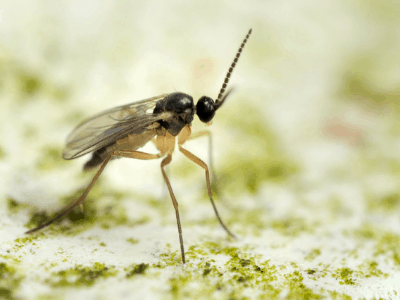
A type of insect pest known as fungus gnats impacts indoor houseplants…
Fruit fly-sized, fungus gnats can bite and do not spread diseases to humans…
On the other hand, plants are at risk…
Adult fungus gnats don’t damage plants or bite people; their presence is primarily considered a nuisance. Larvae, however, when present in large numbers, can damage roots and stunt plant growth, particularly in seedlings and young plants. Significant root damage and even plant death have been observed in interior plantscapes and in houseplants when high populations were associated with moist, organically-rich soil.
J.A. Bethke and S. H. Dreistadt in Fungus Gnats: Integrated Pest Management in the Home, Garden and Landscape
Hence, how do you identify them?
Fungus gnats like to hang out near fruit, rotten food, and dirty fridges…
However…
They are not the same as fruit flies, since they are darker in color…
It is possible to notice sudden wilting, loss of vigor, weak growth…
… and yellowing of the foliage when you have a fungus gnat infestation.
More severe infestations can lead to complete plant death…
The Life Cycle of Fungus Gnats
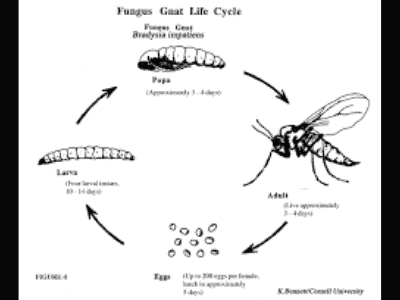
Whenever dealing with pests, it is important to understand their life cycle…
It’s important to remember that these insects are short-lived…
… living only for about one week, and laying hundreds of eggs in moist, fertile soils.
The pupal stage lasts about three to four days, before the adults leave the ground…
It takes about three to four weeks for the entire cycle from egg to adult…
… which means infestations can occur quickly.
One adult can produce 300 new gnats…
… and on average it takes three to four weeks from egg to adult.
How do You Identify Fungus Gnats?
It’s a delicate grayish-black fly that looks like a mosquito…
… and measures about an eighth inch long with long legs and transparent wings.
These insects can’t fly well and usually stick to plants and soil…
However, when watered, they’ll take flight…
A fungus gnat’s larvae are about 1/4 inch long…
… with a shiny black head and an elongated, whitish body.
They are typically found in damp, rich soils, feeding on root hairs…
… mushrooms, and other organic materials.
Plants Vulnerable To Fungus Gnats
They will eat plants at any stage – eggs, larvae, pupae, and adults…
Therefore, potted plants are most commonly infested with these pests…
While they do not discriminate and will attack almost any household plant…
… some varieties are more susceptible to an infestation:
- African Violets
- Geraniums
- Carnations
- Poinsettias
- Spider Plants
- Snake Plant
- Peace Lilies
- Wandering Jews
How To Get Rid Of Fungus Gnats
The most effective way to eradicate a pest infestation on your plants usually involves a few steps…
It’s not as simple as spraying and watching your bugs vanish…
You must be active in your quest to get rid of the infestation…
If you’re serious about learning how to get rid of fungus gnats, you’ll have to put in a lot of effort…
Catching adult fungus gnats is the easy part, but it’s important to focus on the eggs as well…
4 Prevention Methods To Stop Fungus Gnats
We hope that you will never have a problem with fungus gnats…
… so if you want to prevent them entirely, you should take preventative measures.
The methods will prevent your plants from becoming infested in the first place…
Inspect Before Purchase

You should inspect your plant carefully at the store before you buy it…
… searching for signs of insects, pests, or diseases.
Turn the soil around the base of the plant, looking for transparent, glossy larvae…
If there are flying gnats around the plant, do not pick it!
Don’t Overwater Your Plants
It’s important to avoid overwatering your plants because fungus gnats prefer damp soil…
This step is particularly important during the winter months when plants require less water…
If you use potting soil that holds onto moisture, you should avoid it…
Peat moss is a good example of a medium that might harbor moisture and promote egg-laying…
Add a Sand Layer
One way to prevent gnats from taking root in your houseplant…
… is to add sand to the top of the soil.
This will prevent them from laying eggs or emerging from the soil…
If you choose this option, make sure you continually add sand…
Cover Drainage Holes
In most cases, gnats stay near the top of your houseplant pots…
… but sometimes they find their way into the drainage holes on the underside.
They can also lay their eggs in the drainage holes of your container…
You can prevent this from happening by covering the drainage holes with synthetic fabric…
All you need to do is wrap the fabric around the bottom of the pot and secure it with a rubber band…
In addition to preventing gnats from entering or exiting the hole…
… covering the holes with the appropriate material…
… allows water to pass freely but is effective at preventing gnats.
8 Ways To Get Rid Of Fungus Gnats
So, your preventative approach didn’t work. Don’t worry, it happens to everyone…
No matter how hard I try, fungus gnats will inevitably invade my plants…
If that happens, you will have to take steps to learn exactly how to get rid of them…
Let the Soil Dry Out
In order to solve the egg problem, you will need to let your soil dry out…
… to a depth of at least two inches between waterings.
When you stick your finger into some soil…
… you can tell how deep you have to dig to reach moist soil.
Dry soil prevents larvae from developing into eggs…
… and also makes the soil less attractive to egg-laying females.
Yellow Sticky Traps

Glue traps, typically yellow, attract adult gnats because of their affinity for yellow…
You can hang them around your plants, and they’ll bring them to your plants…
You can also place the traps horizontally at the top of the soil…
… to catch a large population of egg-laying adult female fungi gnats.
Use sticks of yellow sticky tape to catch insects…
Once they penetrate the tape, remove the trap and place a new one…
Use BT
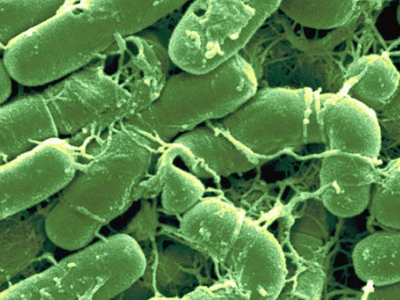
A biological pesticide called Bacillus thuringiensis (BT) kills larvae…
… while being safe for humans and beneficial to many insects, fish, and other animals.
It doesn’t generate any toxic residues, so you can safely use it in your house…
Introduce Beneficial Nematodes
Nematodes are tiny roundworms that attack bacteria and other arthropods…
The larvae stage of fungus gnats can be destroyed…
… by adding nematodes to your house plants as a top dress.
In addition to killing insects from the inside out…
… nematodes release bacteria into the soil that make them disappear from view.
Nematodes are also safe to use around your pets, other plants, and your family…
DIY Non-Toxic Spray
For my garden, I use non-toxic pesticides to get rid of irritating insects, such as fungus gnats…
Some gardeners use cinnamon, sesame oil, and peppermint to combat the problem…
Use Neem Oil

Besides the organic sprays derived from plants, neem oil is also used on plants…
… to control pests, especially exotic pests, including aphids, etc.
The neem tree is found throughout Africa and Asia…
Make a Vinegar Trap
In addition to vinegar traps, my favorite thing to catch gnats is a fruit or fungus fly trap…
They’re simple to make and are effective…
I’ve caught tens of thousands of gnats using these tiny devices…
Combine equal parts of vinegar and water with a dash of liquid dish soap in a shallow container…
Put a plastic baggie over the top and secure it the rubber band…
Then poke small holes in the plastic to allow gnats to enter while not having a way out…
Give a Diatomaceous Earth a Try
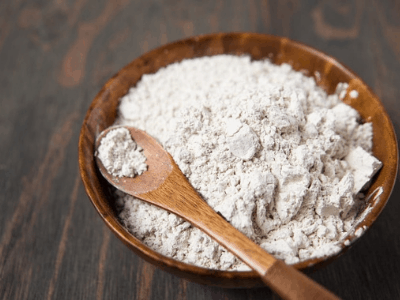
You can use diatomaceous earth (DE) to dehydrate and immobilize fungus gnats…
DE adheres to gnats, which are dehydrated and immobilized…
The soil surface should be dust with DE, particularly the inside edges of the pot…
Ensure the soil is dry before applying DE…
If the soil is moist, the DE will soak up the moisture and won’t stick to the gnats…
If it doesn’t stick to the gnats, it won’t work!
To sum it up…
Despite the fact that fungus gnats are the most harmless pests to humans…
… they can completely gut your plants.
That’s why you need to learn how to eliminate them…
All houseplants should be handled with as much caution as possible…
… if you see anything wrong with them, start working on getting rid of them immediately…
… and remember to be consistent.
Conclusion
If you do have any further queries on the matter…
… or suggestions on alternatives to dealing with fungus gnats…
… comment down below or contact us.
Check out more posts in this website like this one here!
Have an awesome gardening journey!

